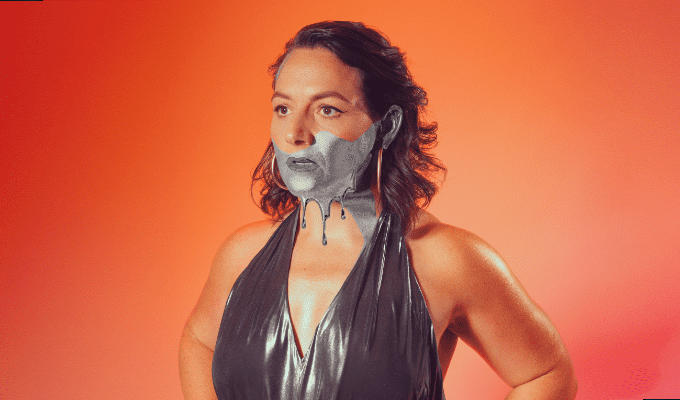Is Twitter a good training ground for stand-up?
Top tweeter Robin Flavell does a real gig
Every now and then it's good to do something dumb and dangerous to remind yourself that you're alive; vote Liberal Democrat, get a night bus through West Norwood, manage QPR, something like that. Anything that takes you out of your comfort zone and places you smack bang in the middle of the white-knuckle panic arena. For me, this year, it was to have a stab at stand-up.
I've written plenty of jokes over the last couple of years but I never had any pretentions to perform them. I always saw myself as a writer and felt that I didn't have the ego or the big match mentality required to strut my stuff on the stage.
But then several people who followed me on Twitter suggested that I should give stand-up a go and over time the idea became an itch I increasingly needed to scratch. I also figured it would be a good means of self-promotion, having recently left my 9 to 5 job to go full-time as a comedy writer.
I must admit the thought of doing stand-up terrified me, and I’d be lying if I said there wasn’t a part of me that really wanted to hate it, or be truly awful at it, so I could strike it from my to do list and never go there again. But when Bec Hill from The Pun Run approached me and asked if I wanted to do a five-minute slot at her event in February, I took a deep breath, and said yes.
But my comedy skills, such as they are, had been limited almost exclusively to writing on Twitter. How transferable would those skills be to the stand-up stage?
The sheer number of would-be joke writers within its walls tells you that it’s relatively easy to fire out a few one liners in the safe environment of Twitter. But arguably Twitter's cosy bosom is no place to prepare yourself for the bear-pit of live performance. If a joke falls flat on Twitter it will simply get washed away in the ceaseless stream of the timeline. No one boos. No one gets up and walks out. The long, deathly silence which must haunt the dreams of every stand-up comedian is of no concern.
The worst thing that can happen to the Twitter comedian is someone will tweet you some abuse. But online hecklers are even dumber than their real life cousins as they have failed to grasp that Twitter comes with its own ejector seat; the block button. You don't even have to think of a pithy put down. Just press block, and bang, the heckler is gone. It doesn't make for entertaining repartee, and it won’t sharpen your bantering skills, but there's a certain satisfaction to responding to a smart-arse tweeter with a big fat block. And they won’t be waiting for you outside with a hammer. I imagine real comedians must long for something similar at times...
But does comedy honed for the fast-moving, soundbite world of Twitter transfer easily to live performance? When I started to put a routine together I quickly discovered that, in my case at least, a lot of it didn’t. Firstly, some of my most retweeted jokes were based upon topical news stories, long since consigned to chip paper, so they were all out. Secondly, I had a raft of gags about the idiosyncrasies of Twitter and the internet itself (Twitter loves a good meta-joke) so they were no good. And thirdly, my staple Twitter joke hinges on some sort of wordplay, and even though the night was billed as being all about puns, I found that many of mine which worked OK when written down, were nonsensical when spoken. For example:
‘I don’t trust Dannii Minogue – her i’s are too close together’
Cue lots of baffled faces. If I found I had to write the joke out in big letters on a blackboard so people understood it, it probably wasn’t right for the set.
And finally, I reluctantly dropped some of my own favourite jokes because they just didn’t sound like me when I told them out loud. On Twitter you can flit between personas endlessly without leaving everyone confused. On stage, a consistent voice is paramount to a convincing performance.
Overall, when I reviewed the material I was left with, I was pleased at how few further tweaks I had to make. In this regard Twitter had provided good discipline for a joke writer. Word economy is vital on stage (especially in a short set) and the 140 character limit of Twitter does much to ensure brevity.
I then sorted the jokes into categories (political, cultural, sexual etc) and formed them into a rough narrative order. I found this sequence helped me enormously when it came to remembering them (I was determined not to have to refer to notes). I then learned the lot by wrote, with the aid of the voice notes on my iPhone
Listening back to myself was an unpleasant, but helpful experience, as was going through the routine with an impartial, non-critical friend. The cat was unavailable, so I ended up using my wife. Comedian Jo Caulfield has also compiled some very useful tips on how to do stand-up (and creating comedy in general) and I recommend all first-timers have a read.
And the end result? Well, have a look below and see what you think. From my perspective, I enjoyed the whole experience immensely. I was less nervous than I thought I was going to be, aided no doubt by a receptive crowd, a great bunch of fellow performers and the splendid Ms Hill as compere. So I think I may have to have another go, just to prove it wasn’t a fluke…
- Robin Flavell tweets @RobinFlavell.
Published: 25 Apr 2013






